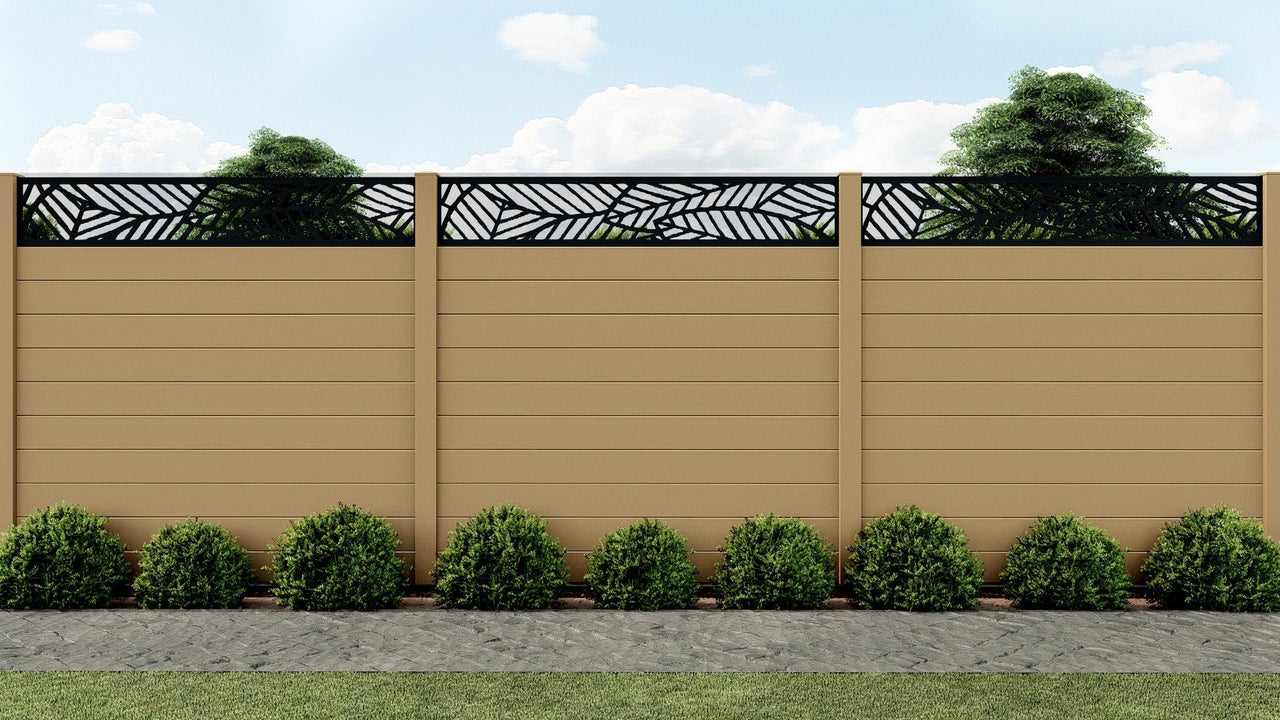The Best Time of the Year to Install Composite Cladding
Summertime is the perfect time to enjoy your garden, however it may not be the best time to begin your composite cladding project. Explore the benefits of each season to discover the perfect time to install your cladding.

Author Name
Chief Writer
Thu, 28 Jul 2026

Planning the timing of your composite cladding installation is just as important as selecting the right materials. While composite cladding can be installed year-round, understanding seasonal weather conditions and on-site factors can help ensure a smoother, safer and longer-lasting result.
In this guide, we’ll explore the best time of year to install composite cladding in the UK, key environmental considerations, and tips for achieving professional-quality results, whatever the season.
Understanding Composite Cladding Installation
Composite cladding is designed for durability and ease of installation. Made from a blend of recycled wood fibres and plastic, the boards are engineered to withstand the UK’s variable climate, from freezing winters to humid summers.
Unlike timber, composite boards are dimensionally stable and resist moisture absorption, meaning they don’t swell, warp or split. However, ambient temperature and humidity can still affect installation precision, particularly when cutting, spacing and securing boards.
The Best Seasons for Installing Composite Cladding
Spring: The Ideal Installation Window
Embarking on a composite cladding project during spring offers a balanced mix of advantages and challenges. The moderate temperatures and reduced likelihood of extreme weather events make spring an appealing time for installation. If you act early you can get ahead of the spring/ summertime rush.
Moreover, the milder conditions contribute to the optimal curing and setting of materials. However, the popularity of springtime for home improvement projects run similar risks to summer as the increased demand for contractors can results in scheduling issues and possible increased costs, however this period is tends to be slightly quitter than summer.
Additionally, unpredictable rain showers can pose a risk to the installation process, requiring careful planning and weather monitoring. However again these issues can all be monitored with careful planning and getting ahead of the summer rush allows you to enjoy your garden project as soon as the British summer time begins. Whilst the blossoming landscape provides an aesthetically pleasing backdrop, enhancing the overall visual impact of your home or gardens transformation.
Summer: Great for Dry Conditions
Installing composite cladding during the summer months comes with its own set of benefits and drawbacks. On the positive side, the warm weather provides an ideal environment for the cutting and setting of materials, ensuring a swift and efficient installation process. Longer daylight hours also offer extended working periods, potentially accelerating the overall project timeline. The warmer weather also means you to enjoy your garden transformation the second it is complete.
However, the popularity of a summer garden projects can make it challenging to find an installer, whilst the increased demand for their services can lead to scheduling challenges and increased costs. The increase summer demand can also effect the availability of materials. Resulting in longer lead times and difficulty with sourcing your desired products.
Additionally, extreme heat can create challenges during the installation process, affecting the handling and application of materials, which can results in delays. Homeowners also need to consider the disruptions a garden project can create which can leave you unable to enjoy the summer in your garden until the project is complete. However, with thoughtful planning and organisation you can easily mitigate these issues to ensure your cladding project runs swiftly and smoothly.
Autumn: Reliable and Practical for Most Projects
Opting for a autumn or winter cladding install is a deceptively smart choice. The weather is often more stable allowing for speedy installation process, whilst the cooler temperatures can be beneficial for preparing the materials and prevent delays caused by regular expansion and contraction which is common in summer.
Skilled contractors are usually more available during the off-peak season, potentially streamlining scheduling and reducing costs. In terms of product availability the autumn and winter prove advantageous for sourcing materials as stock levels tend to be robust, leading to shorter delivery and lead times, and savvy homeowners may even capitalise on seasonal sales, enhancing the overall cost-effectiveness of their projects.
If your conducting your cladding project to replace weathered wood or fix an issue, installing composite cladding in colder months provides immediate protection to your cladded area, fortifying it against winter weather and ensuring its resilience when spring arrives. Whilst also allowing you to enjoy the new addition earlier and ensuring the results are ready to shine when spring arrives.
The primary drawback revolves around the colder, possibly freezing temperatures and shorter days, which can pose challenges during material handling and application leading to potential delays. However, with modern composite materials, this may not be as much of an issue. Composite cladding's inherent properties, including resistance to warping and weathering, make it particularly well-suited for a winter installation, surpassing traditional wood materials in durability and adaptability to colder temperatures. Despite which product you select skilled professional installers can take precautions to ensure the optimal application of cladding despite the temperatures.
With careful planning opting for the cooler months to complete your cladding project can be a fantastic choice and great way to get ahead of the spring/ summer rush.
Why Timing Matters
Installing composite cladding in the right conditions helps ensure:
Accurate board alignment and joint spacing.
Optimal fixing strength and long-term stability.
Reduced stress on substructures and trims.
Cleaner, more precise cutting and finishing.
By planning ahead, you’ll achieve a professional-looking façade that performs reliably throughout its lifespan, even in challenging UK weather conditions.
Common Mistakes to Avoid
Installing during frost or rain, leading to moisture trapped behind boards.
Ignoring expansion gaps, resulting in buckling during hot spells.
Cutting boards without allowing for temperature adjustment.
Failing to check substructure level before fixing the first board.
Avoiding these mistakes will help maximise the performance, appearance and warranty of your cladding system.
The Takeaway
While composite cladding can be installed year-round, spring and early autumn offer the most stable, predictable conditions in the UK.
By planning installation during mild, dry weather and following best practices for storage, spacing and fixing, you’ll ensure your façade remains beautiful, resilient, and maintenance-free for decades to come.
Every season presents its own set of pros and cons for a cladding project. It is important to consider the unique requirements of your project and when you would like to start enjoying your new renovation to allow you to make the best choice for you. However with careful planning you can run a successful composite cladding project at any time of the year.











